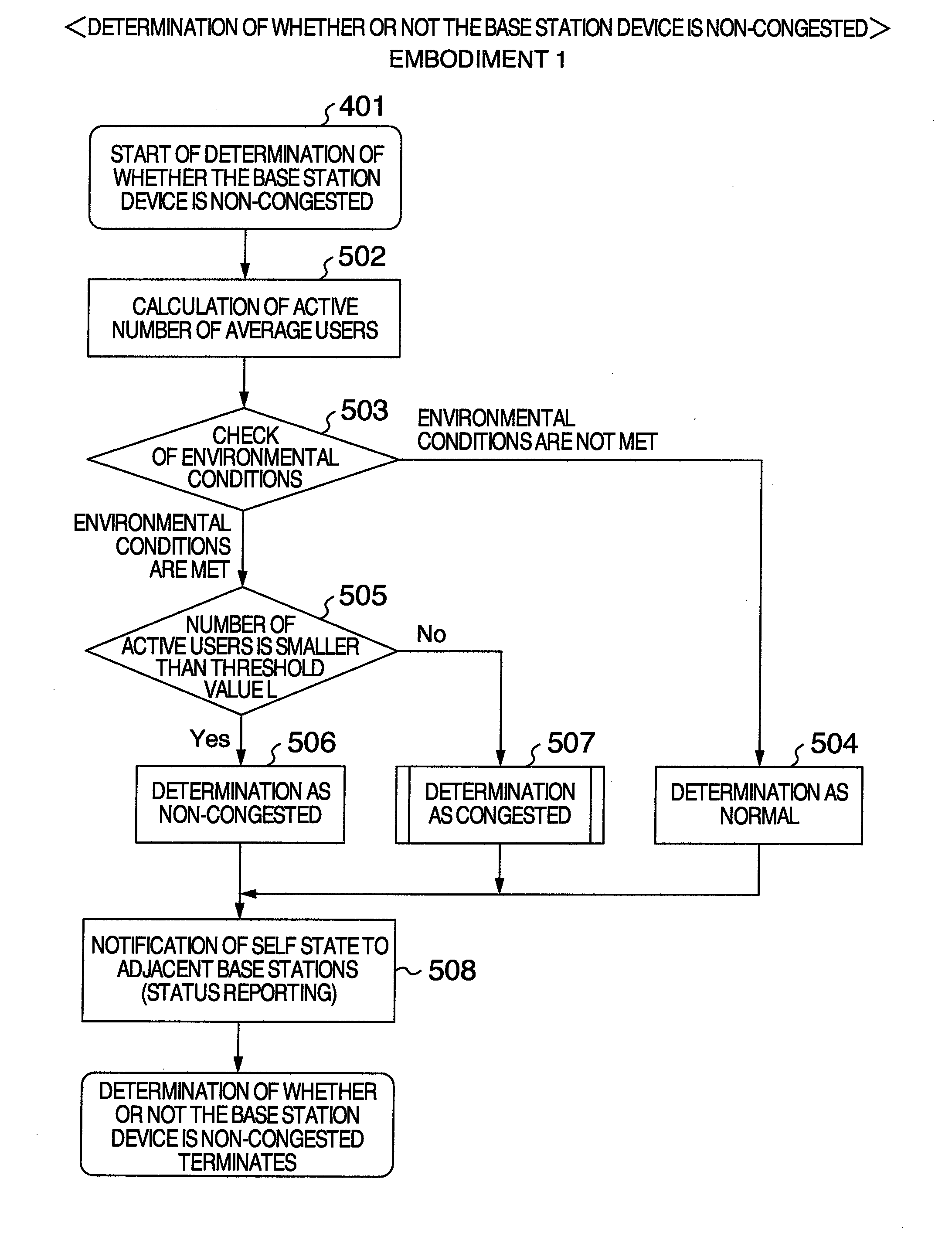Radio resource assignment method and base station device
a radio resource and base station technology, applied in the field of mobile communications technology, can solve the problems of resource exhaustion, low population density, and low number of mobile terminal devices within each cell, and achieve the effect of reducing interference, efficiently and adaptively reducing interferen
- Summary
- Abstract
- Description
- Claims
- Application Information
AI Technical Summary
Benefits of technology
Problems solved by technology
Method used
Image
Examples
embodiment 1
[0067]Embodiment 1 according to the present invention will be hereinafter explained.
[0068]To begin with, the construction of a base station device and operations of each unit of the base station device will be explained.
[0069]FIG. 8 is a diagram illustrating the construction of the base station device.
[0070]First, an antenna (not shown) is connected to the left side of the device depicted in FIG. 8. An analog signal received by the antenna is inputted into an RF (Radio Frequency) unit 201 from the left side of the FIG. 8 and converted into a digital signal. CP (Cyclic Prefix) is extracted from the digital signal by a CP extraction unit 202 at a timing specific to the base station. CP is a certain redundant duration applied to an OFDM (Orthogonal Frequency Division Multiplexing) signal so as to remove multipath interference. The received signal, from which CP is extracted, is multiplied by FFT at a FFT (Fast Fourier Transform) unit 203. A time domain signal is divided into a frequenc...
embodiment 2
[0116]Embodiment 2 will be described below.
[0117]Embodiment 2 according to the present invention will be explained with reference to FIGS. 1, 8, 12, 13, 16 and 17. The explanation of parts identical to those of Embodiment 1 will be omitted.
[0118]FIG. 16 is a flow chart illustrating a processing of determining congestion / non-congestion according to Embodiment 2.
[0119]FIG. 17 is a flow chart illustrating a processing of determining whether or not the base station device is congested according to Embodiment 2. According to Embodiment 2, a threshold value for determination of congestion or non-congestion is automatically and adaptively changed.
[0120]Also in Embodiment 2, the determination of congestion or non-congestion, and automatic changing of the threshold value are performed by DSP 215 depicted in FIG. 8. The process shown in FIG. 12 is the same as that according to Embodiment 1. In Embodiment 2, the determination of congestion or non-congestion shown in FIG. 12 is the same as thos...
embodiment 3
[0130]Next, Embodiment 3 will be explained with reference to FIGS. 1, 8, 12, 13, 16, 17, 22, 23, and 24. The explanation of parts identical to those of Embodiment 1 and Embodiment 2 will be omitted.
[0131]In Embodiment 3, when congested base station devices adjoin each other, the base station devices share the resources in a coordinated manner.
[0132]FIG. 22 is a diagram explaining a relationship among adjacent base stations when Embodiment 3 of the present invention is applied.
[0133]FIG. 23 is a diagram explaining an example of distribution of frequency resources among adjacent base station devices according to Embodiment 3.
[0134]FIG. 24 is a flow chart explaining the content of the processing in the base station device in Embodiment 3 according to the present invention. In the flow chart, resources are shared by the adjacent base stations in a coordinated manner.
[0135]The processing of Embodiment 3 is also performed by the DSP 215 depicted in FIG. 8.
[0136]The process depicted in FIG...
PUM
 Login to View More
Login to View More Abstract
Description
Claims
Application Information
 Login to View More
Login to View More - R&D
- Intellectual Property
- Life Sciences
- Materials
- Tech Scout
- Unparalleled Data Quality
- Higher Quality Content
- 60% Fewer Hallucinations
Browse by: Latest US Patents, China's latest patents, Technical Efficacy Thesaurus, Application Domain, Technology Topic, Popular Technical Reports.
© 2025 PatSnap. All rights reserved.Legal|Privacy policy|Modern Slavery Act Transparency Statement|Sitemap|About US| Contact US: help@patsnap.com



